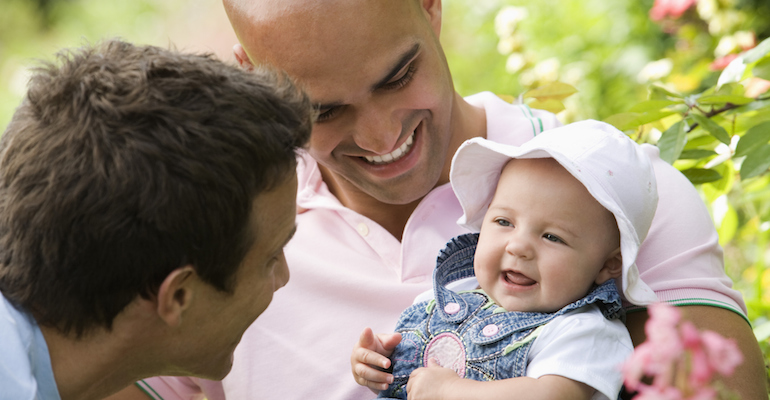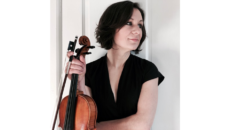In a recent New York Times article, writer Sabrina Tavernise traced the recent increase in gay and lesbian couples adopting across the country. This is in the face of legal hurdles in many states that make adoption by same-sex parents an especially daunting process. What’s behind these numbers? And will the upward trend continue? In fact, advocates point to two primary reasons for the increase: the need for homes for children who are waiting for adoption, and growing acceptance among Americans of gays and lesbians.
Nontraditional Families: the Numbers
According to data from Gary Gates, a demographer from the University of California, Los Angeles, 19 percent of same-sex couples who were raising children in 2009 reported an adopted child as a member of the household, up from just eight percent in 2000. Gates estimates that four percent of the adopted population in the United States — about 65,000 children — live in homes in which the head of the household is gay or lesbian.
Researchers from the U.S. Census Bureau recently examined the demographics of same-sex couple households with children. By analyzing Census data, Kristy Krivickas and Daphne Lofquist found that 26.5 percent of lesbian couples had children in their household in 2008, up from 22 percent in 1990. For gay couples, the figure rose from five percent to 13.9 percent. Of course, not all of these children were adopted, but the numbers do point to an increased tendency among same-sex couples to raise children, and adoption is one way to do that.
The Barriers to Family
Because most states do not have laws or formal policies in place, a lot can depend on the judgment of child welfare professionals and judges when it comes to same-sex couples and adoption. In some states, however, the laws or policies declare that same-sex or unmarried couples are not allowed to adopt, and gay and lesbian couples are not able to marry. While one parent can adopt as a single parent, that then precludes the second parent from adopting. This situation may improve as more states legalize same-sex marriage and thus, in turn, permit adoption by both members of a same-sex couple.
According to the Family Equality Council, many states have policies that have the effect of restricting foster parenting or adoption by gays and lesbians. Such policies include allowing preference for heterosexual married couples, barring cohabiting same-sex couples, and allowing child-placement agencies to discriminate on the basis of religious or moral objections. Of these states, only Florida explicitly bars gays and lesbians from adopting. (Although this ban was overturned recently, Florida legislators are expected to propose a measure that will restrict the ability of gays and lesbians to adopt and foster.)
In contrast, the adoption and foster care placement policies of six states have explicitly prohibited discrimination based on sexual orientation. These states are California, Maryland, Massachusetts, Nevada, New Jersey, and New York.
New Research May Reinforce the Trend
The sad fact is, the barriers remain even though research shows that sexual orientation does not impact one’s ability to be a good parent. Research findings provide favorable evidence to encourage the continued increase in adoptions by same-sex couples.
In one recent study, psychologist Rachel Farr, from the University of Virginia, and her colleagues examined child development and parenting in over 100 families with adopted children, including 29 gay couples, 27 lesbian couples, and 59 heterosexual couples. The study found that children from all three groups were functioning well and had relatively few behavior problems, as reported by their parents and teachers. Family type was not a significant predictor of school outcomes.
Krivickas and Lofquist’s study of families consisting of unmarried couples and stepchildren or adopted children (the sampling was too small to draw conclusions in terms of either subgroup of children) found that the same-sex couples had higher education levels and greater economic status than the opposite-sex couples and that both partners in the same-sex couples were more likely to be employed.
While it cannot be discerned from available data whether the increase in adoptions by gay and lesbian families is due primarily to private adoptions or to adoptions from foster care, researchers at the University of Maryland have found that in states with anti-gay policies, significantly fewer children were adopted from foster care. Same-sex couples may be more likely to adopt than heterosexual couples and more open to welcoming a “hard to place” child into their homes.
Currently there are 107,011 children in the U.S. foster care system waiting for families. Total foster adoption numbers had been on the rise each year until 2010, when fewer than expected took place. But as the number of adoptions by gay and lesbian couples grows, there may be new hope for many of our nation’s waiting kids.



